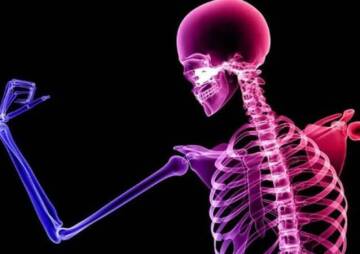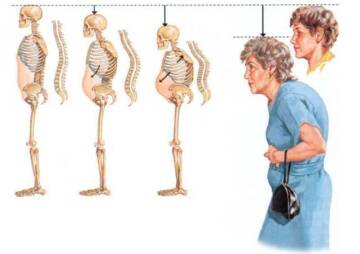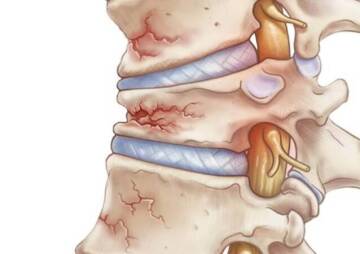-
kitengo
Craniomaxillofacial Surgery
Orthopedic Surgery
Spine Surgery
Orthopedic Implants
Hip Surgery
Knee Surgery
Pectus Excavatum
Bone Graft
Disinfectants
Healthcare
Types of Spinal Fractures

A spinal fracture or dislocation of one or more vertebrae in the spine is a serious orthopedic injury. Because the spine is directly connected to the spinal cord
Spinal cord injuries range from relatively mild ligament and muscle strain to fractures and dislocations of the vertebrae and spinal cord injuries, which is why they are so important. Its treatment also depends on the type of fracture and the degree of instability of the spine. Therefore, familiarity with the vertebral fracture types helps to choose the best treatment.
What are spinal fractures?
A spinal fracture or dislocation of one or more vertebrae in the spine is a severe orthopedic injury. Because the spine is directly connected to the spinal cord, and spinal cord damage can lead to paralysis or death. Fractures of the spine may occur in the cervical spine, thoracic spine, or lumbar spine. About 5 to 10 percent of these fractures occur in the neck, 64 percent in the thoracolumbar (lumbar) region, and often in the T12-L1 vertebrae.

Depending on the severity of the injury, the fracture has symptoms such as pain, walking with difficulty, and inability to move arms or legs. The most common sign of a spinal fracture is moderate to severe pain that increases with movement.
Treatment of spinal fractures depends on the type of fracture and the degree of instability of the spine. Many fractures heal with conservative treatment. However, severe fractures may require surgery to reset the position of vertebral bones.
Familiarity with the three-column division of a vertebral body
To classify the vertebral fracture types, doctors divide them into three regions. This classification is known as the Dennis Classification. In this method, the spine is divided into three parts: the back, middle, and front, called the three-column vertebral division.
Anterior Column
This region is the front part of the vertebrae that faces your body's front and includes the front half of the vertebral body and the intervertebral disc. There is a ligament in the front of the spine called the anterior longitudinal ligament, which is also a part of the anterior column.

Middle Column
This part is the central part of the spine for its stability and includes the posterior half of the vertebral body and the intervertebral disc. There is a ligament behind the vertebral body called the posterior longitudinal ligament, a part of the medial column. The middle column is a sensitive part, and if the vertebrae are broken in this part, the possibility of nerve damage and instability of the spine is very high.
Posterior Column
All parts of the vertebrae in the dorsal part make up the posterior column, including the pedicle, lamina, lateral joints, and vertebral spines.
The most common classification of spinal fractures
Different types of spinal fractures are classified into different categories. The most common type of classification includes compression, burst, flexion-distraction, and fracture-dislocation.
Compression fracture
Compression fractures are more common in patients with osteoporosis or patients whose bones have been weakened by other conditions (such as bone cancer). In this case, the bones are weak and can not withstand the pressure, and even slight pressure can cause cracks and fractures in them. Compression fractures are also divided into Wedge fractures, Crush fractures, and Burst fractures.

Burst fracture
Due to the importance of burst fractures, this type of fracture can be considered a separate branch from compression fractures. This type of fracture occurs when a severe blow crushes the vertebrae. As a result of this fragmentation, pieces of the bone are spread around and may cause damage to the spinal cord.

Flexion-distraction
This type of fracture usually occurs in traffic accidents and is also known as " seat belt damage." When the car crashes, the upper body is pushed forward, but the lower part fastened by the seat belt remains in place. Under these conditions, there is a gap between the vertebrae, and the fracture distraction occurs.

Fracture-dislocation
If the vertebra significantly moves from its place in any fracture, it is called a fracture-dislocation. A fracture-dislocation causes the vertebra to move forward or backward, known as spondylolisthesis. This type of the fracture causes instability of the spine.

Transverse process fracture
The vertebra's transverse processes protrude from three directions behind the vertebra and to its right and left. These processes are the junctions of ligaments and muscles; in accidents, when a strong force is applied to the body, the muscles contract and prepare themselves for the blow. These conditions can cause the spine to become out of alignment, resulting in a transverse process fracture (TPF).

Other vertebral fracture types
Stable and Unstable Fractures
Another type of classification for spinal fractures is common among physicians, according to which fractures are divided into two types: permanent and unstable.
In permanent fractures, the fracture does not deform the spine or cause nerve problems. Although as painful as the unstable type, this type of spinal fracture can still support and distribute body weight well, but in unstable fractures, the weight support and distribution are difficult for the spine. Unstable Fractures are more likely to progress and damage. They may also cause spinal deformity.

Major and Minor Fractures
A minor fracture means a fracture of a part of the vertebrae dorsal elements, i.e., parts that have little effect on the spine stability.
A significant fracture means breaking the main parts of the vertebrae, such as the pedicle or lamina. This type of fracture is essential because the vertebrae's body bears most of the body weight, and if they are broken, they are not in the correct position and cause instability of the spine.
The most critical causes of vertebral fractures
Chest and lumbar spine fractures may be the result of a car accident (45%), falls from a high altitude (20%), sports injuries (15%), violence (15%), and other factors (5%). In many of these cases, serious injuries are inflicted on patients' spines.

Sometimes vertebral fractures occur due to weakness of the bone. Osteoporosis, tumors, and some underlying diseases cause bone weakness. These people may break a spine due to a minor injury or even falling from a short distance.
Symptoms of a spinal fracture
Most vertebral fractures, no matter where they are located, are associated with mild to severe pain that worsens with each movement, depending on where the spinal fracture is. In more severe cases, the fracture may cause neurological symptoms such as numbness, tingling, muscle spasms, weakness, bowel and bladder problems, or even paralysis.

In impression fractures, movement increases pain that is relieved by rest. Sometimes the pain from a fracture extends to the legs and into the abdomen. In cases where the fracture is not treated, the person sees his height shorten.
Flexion-distraction is associated with severe back pain that gets worse with movement. If the severity of the injury is high, it may cause brain damage and loss of consciousness.
Methods of diagnosing spinal fractures
Patients suffering a spinal fracture as a result of a severe accident need immediate treatment. It may be difficult to estimate the extent of their damage in the first assessment.
At the accident scene, rescuers first examine the patient's vital signs, including alertness, ability to breathe, and heart rate. Once vital signs have been established, they assess the bleeding and damage that has resulted in the deformity of the limb. The injured person's spine is held in place by medical neck braces and lumbar fixators before they are transported to the hospital.

Clinical examinations in the hospital begin with a physical examination. The patient's nervous status will be checked, as well as his/her reflex and ability to move will be assessed. If your doctor suspects a spinal fracture, he/she will perform a more detailed examination.
Fractures in the cervical spine, thoracic spine, or lumbar spine can be detected by X-ray. If necessary, a CT scan, an effective way to visualize any changes in the bone structure, will be used. An MRI may also be done to evaluate the surrounding soft tissues, ligaments, intervertebral discs or to identify any spinal cord injuries.

Methods of treatment of spinal fractures
Treatment for a spinal fracture depends on the location and type of the fracture and the amount of pressure applied to the nervous system. Fracture treatment begins with managing and stabilizing pain to prevent further injury. Depending on the fracture type, and its stability, a spinal brace may be needed to stabilize the spine and restrict its movement.

Minor fractures can be treated with spinal braces, but in more complex fractures where there is a possibility of spinal cord injury, surgery is needed.
Fusion surgery is essential for unstable fractures. In this type of surgery, by connecting the vertebrae and fixing them with implants, they are prevented from moving, and the spine is healed.
Impression fractures often heal without surgical intervention to repair the fractures. Non-surgical treatments include rest, painkillers, and spinal braces to limit movement, but if the pain persists after non-surgical treatments, minimally invasive surgery options can be considered. Vertebroplasty and kyphoplasty are minimally invasive surgeries performed to treat impression fractures due to osteoporosis and spinal tumors.
Non-surgical treatment for flexion-distraction is to immobilize the spine with spinal braces and casts. These types of fractures often require surgery to relieve pressure and stabilize. Surgical procedures include vertebrectomy, and fusion, or transplantation.
The transverse process fracture can be treated without surgery with rest and a gradual increase in movement. It may be necessary to use a spinal brace, but a fracture-dislocation requires surgery to fix it.

After the spinal fracture healing, physiotherapy and exercises such as walking, yoga, tai chi, and leisurely dancing help the patient return to his/her everyday life.
Who is most at risk for spinal fractures?
- 80% of patients are 18-25 years old.
- Men are four times more likely than women to have a spinal cord fracture.
- People with osteoporosis
- Athletes, especially in the fields of motorsports, football, horse jumping, gymnastics, rock climbing, bungee jumping, and the like
How to prevent a spine fracture?
Although not all accidents can be prevented, a series of precautions can be taken to reduce spinal fractures' risk.
Always wear your seat belt in your car because seat belts and airbags are designed to protect you in the event of an accident. They protect your head, neck, and chest.

Use calcium and vitamin D in your diet to prevent the progression of osteoporosis.
If you have osteoporosis or have weak bones for any other reasons, your bones may break by falling even from a short distance, so reduce the factors that cause you to fall. for example:
- Remove any carpets you may be slipping on.
- Make sure there are no obstacles in your way.
- Put an anti-slip rubber mattress in the bathroom.
- Stairs should be well lit.
- Try to leave the ladder and things like that to others.
- Be sure to use safety equipment when exercising.
- Prevent osteoporosis progression by proper sports exercises.

Conclusion
Spinal fractures are different from fractures of the bones of the hands or feet. The fracture or dislocation of a vertebra can break the vertebra bone pieces and damage the spinal nerves. Most spinal fractures occur as a result of car accidents, falls, shootings, or exercise. Injuries can range from relatively mild ligament and muscle strain to spinal cord injuries. Depending on the severity of the injury, a spinal fracture may show pain, walking with difficulty, or inability to move the arms or legs. Many fractures heal with careful treatment. However, in severe fractures, surgery may be needed to reset the bones' position, and this treatment will vary depending on the fracture type.
- vitambulisho osteoporosis






